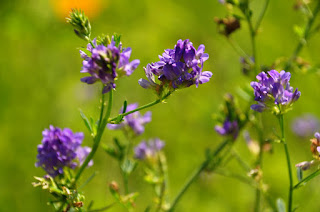Let’s not treat soil like dirt!
Soil is a living, ever-changing mixture of organic and mineral material, gases, and water. Life within soil is sustained through plant growth, nutrient and organic matter recycling, and water infiltration. Everything on Earth depends on soil, and often this vital resource is overlooked. It is our responsibility to care and nurture the soil so that we can have a healthy planet for us and for future generations.
Soil is fragile and can quickly become out of balance from improper
management; when this happens, we are left with unhealthy soil that is not able
to function to the best of its ability. Healthy soil has more organic matter,
better nutrient cycling, increased soil microbes, larger soil pores, less
compaction, and lower nutrient losses. Thankfully, there are conservation
practices that help keep soil in balance so that it can function to the best of
its ability.
A combination of these conservation practices listed below can increase soil health, which in turn improves water quality, protecting these resources for years to come.
🚜 Conservation tillage (reduced tillage or no-till) helps protect the soil by reducing compaction, improving organic matter retention, and increasing water infiltration.
🌱 Keeping vegetation on the ground year-round (such as using cover crops) can prevent soil erosion, increase organic matter and nutrient cycling, and decrease the amount of soil and nutrient runoff to surface water. When there is more organic matter and nutrient cycling in the soil, there is greater soil productivity.
🔬 Soil testing helps to determine a baseline of nutrients available in the soil. Once a soil test is conducted a nutrient management plan should be followed to ensure the proper placement, rate, and type of nutrients being added back into the soil so that the soil can be brought back into balance and there will be fewer nutrient losses into nearby water.
🌽 Using a crop rotation and growing a variety of crops will help increase soil productivity as different crops benefit the soil in different ways.
💧 Filter strips, or buffer zones, along drains or streams that pass through fields help keep the soil in place and remove sediment and nutrients from runoff before it enters the water.
A healthy soil helps keep our tables full of food and our
water clean. No matter where we live, we all have a responsibility to protect
soil, as it provides for us every day. Let’s not treat soil like dirt!
This
information is part of a larger project funded by EGLE under the NPS Control
Fund and Section 319 of the federal CWA.




Comments
Post a Comment